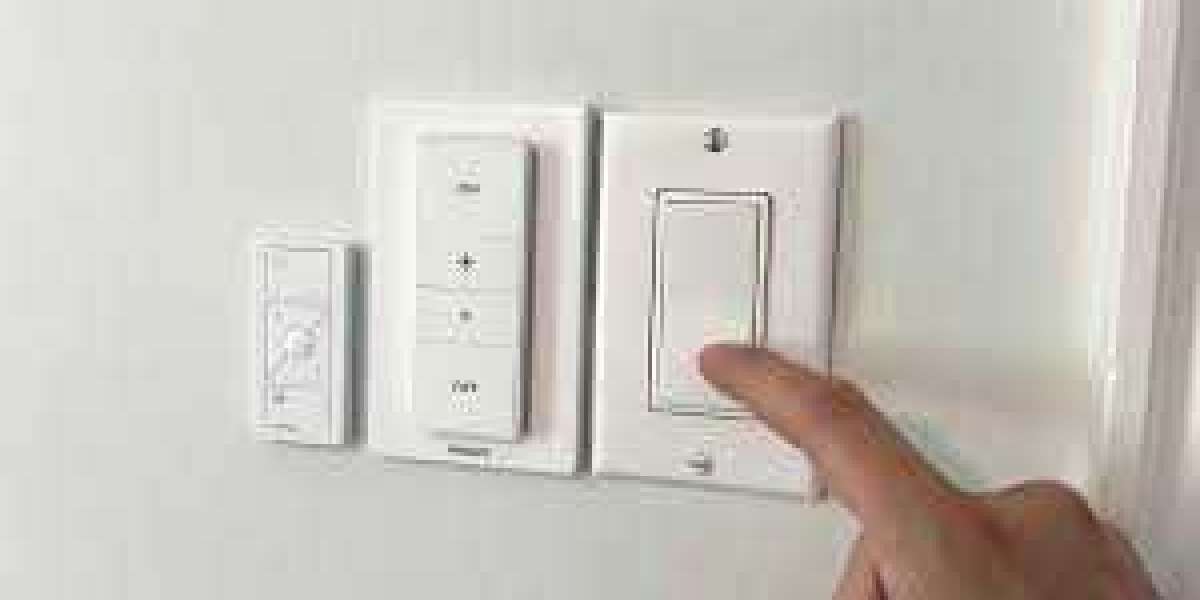A smart light switch is a modern replacement for traditional wall switches, allowing you to control your home's lighting through various advanced methods, including smartphone apps, voice commands, and automation systems. By integrating smart light switches into your home, you can enhance energy efficiency, improve convenience, and add a level of customization to your lighting preferences.
What is a Smart Light Switch?
A Smart Light Switch is a connected device that replaces your standard light switch and provides remote control over your lights through Wi-Fi, Zigbee, or Z-Wave. Once installed, smart switches allow you to control your lighting from anywhere via a smartphone app, smart home hub, or voice assistants like Alexa, Google Assistant, or Apple Siri.
These switches work with traditional light fixtures and bulbs, but many are designed to be compatible with smart bulbs, offering more granular control over features such as dimming, scheduling, and color changing.
Key Features of Smart Light Switches
- Remote Control: Smart light switches let you turn lights on and off or adjust brightness from anywhere using your smartphone. This is especially useful for controlling lights while away from home or setting lighting scenes in multiple rooms.
- Voice Control: Most smart switches are compatible with Amazon Alexa, Google Assistant, and Apple HomeKit. You can control the lights with simple voice commands like "Alexa, turn off the kitchen lights" or "Hey Google, dim the living room lights to 50%."
- Scheduling and Timers: With scheduling features, you can program your lights to turn on or off at specific times. This is great for security purposes (making it look like someone is home) or simply for convenience, such as having your lights automatically turn on in the morning.
- Dimming: Many smart switches offer dimming capabilities, allowing you to adjust the brightness of your lights to create the perfect ambiance.
- Energy Efficiency: Smart light switches can help you save on energy bills by allowing you to automate lights or ensure they’re not left on when you’re not home. Some switches also track energy usage over time.
- Scene Control: Some systems allow you to create lighting scenes that adjust multiple lights at once to create a specific atmosphere. For example, a "Movie Night" scene could dim the living room lights to a lower level.
- Integration with Smart Home Systems: Many smart switches can be integrated into broader smart home ecosystems, working alongside devices like smart thermostats, cameras, and sensors to create a fully automated home experience.
Types of Smart Light Switches
- Wi-Fi Smart Light Switches: These are directly connected to your home’s Wi-Fi network, allowing you to control them without a hub. They’re easy to install and set up, but can sometimes be less reliable if your Wi-Fi network is unstable or overloaded.
- Zigbee and Z-Wave Smart Switches: These switches require a smart home hub (like the Samsung SmartThings Hub or Amazon Echo Plus) to function. Zigbee and Z-Wave devices are known for their reliability and ability to form a mesh network, where each device communicates with others to improve coverage and reduce strain on your Wi-Fi.
- Touchscreen Smart Switches: Some smart switches come with a touchscreen interface, offering more advanced on-device control. These switches can display current settings, schedules, and offer customization right from the wall switch.
- Dimmer Switches: These switches allow you to control the brightness of your lights and are ideal for areas where you want adjustable lighting, such as living rooms or bedrooms.
- 3-Way and 4-Way Switches: If your home has light fixtures controlled by multiple switches (such as at the top and bottom of a staircase), you’ll need 3-way or 4-way smart switches. These allow you to control a single light from multiple locations.
Popular Smart Light Switch Brands
- TP-Link Kasa Smart Light Switch
- Features: No hub required, Wi-Fi connectivity, remote control via Kasa app, works with Alexa and Google Assistant, scheduling, and away mode.
- Installation: Easy to install, requires a neutral wire.
- Price: Affordable with basic functionality.
- Lutron Caséta
- Features: Works with a wide range of smart home systems including Alexa, Google Assistant, and Apple HomeKit. Offers dimming, scene control, and geofencing.
- Installation: Requires a Lutron hub for maximum functionality, but it's considered one of the most reliable systems.
- Price: Higher-end, known for reliability and advanced features.
- Wemo Smart Light Switch
- Features: No hub required, Wi-Fi connectivity, voice control through Alexa, Google Assistant, and Apple HomeKit. Easy scheduling and timer functions.
- Installation: Requires a neutral wire.
- Price: Mid-range option.
- Leviton Decora Smart Switch
- Features: Wi-Fi-based, compatible with Alexa, Google Assistant, and Apple HomeKit. Offers scheduling, dimming, and vacation mode.
- Installation: Requires neutral wire.
- Price: Mid-range, solid performance.
- GE Cync Smart Switch
- Features: Offers voice control via Alexa and Google Assistant, scheduling, and away mode for security purposes. Compatible with smart bulbs.
- Installation: Easy to install, requires neutral wire.
- Price: Affordable and versatile.
How to Choose the Right Smart Light Switch
- Compatibility with Existing Setup: Ensure the smart switch you choose is compatible with your smart home system (e.g., Alexa, Google Assistant, or Apple HomeKit). Check if you need a neutral wire or a hub for installation.
- Dimming Features: If you prefer to adjust the brightness of your lights, opt for a smart dimmer switch. Make sure your light bulbs are dimmable and compatible with the switch.
- Voice Control: If you frequently use voice assistants, choose a switch that supports your preferred platform, such as Alexa, Google Assistant, or Siri.
- 3-Way Compatibility: For rooms where a light is controlled by more than one switch (e.g., hallways or large rooms), ensure you select a 3-way or 4-way compatible switch.
- Installation Requirements: Some smart switches require neutral wires, which may not be present in older homes. Check your wiring setup before purchasing.
- App Features: The quality of the companion app can significantly impact your experience. Look for apps that offer intuitive control, scheduling, and integration with other smart home devices.
Installation of Smart Light Switches
Installing a smart light switch is typically straightforward, but it requires basic knowledge of home wiring. Here’s a general step-by-step guide:
- Turn Off Power: Ensure the power to the light switch you’re replacing is turned off at the circuit breaker.
- Remove the Old Switch: Use a screwdriver to remove the faceplate and disconnect the wires from the old switch.
- Connect the Smart Switch: Follow the manufacturer’s wiring instructions. Most smart switches require a neutral wire, ground wire, and load wire.
- Install the Faceplate: Once the wires are connected, screw the switch into the wall and attach the new faceplate.
- Restore Power: Turn the power back on at the circuit breaker and set up the smart switch through its corresponding app.
Conclusion
A smart light switch is a versatile addition to any modern home, offering greater control, convenience, and energy efficiency over traditional switches. With features like voice control, remote access, and automation, you can customize your lighting to match your lifestyle and preferences. Just be sure to consider your home’s wiring setup, compatibility with other devices, and the functionality you need before making a purchase.







